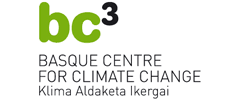| Smart mature resilience: towards more resilient cities in Europe
Lecturer:
Dr. Jose Mari Sarriegi (Tecnum)
Abstract:
The 21st Century has been termed "the century of disasters" (Jan Egeland, former United Nations Undersecretary-General for Humanitarian Affairs and Emergency Relief Coordinator, February 2011). Worldwide there were twice as many disasters and catastrophes in the first decade of this century as in the last decade of the 20th Century. Europe is no exception: our continent is affected directly and indirectly. And the trend continues, fuelled by climate change and social dynamics.
The need for resilience is emphasized. But how to best deal with known risks and prepare for the unexpected is enormously complex and still nascent. The much needed operationalization of resilience – the breaking down of the resilience concept into a holistic framework of measurable interventions – must be seen as a directed dynamic process: a process that unfolds over time following the resilience management guideline.
Smart Mature Resilience (SMR) project will develop and validate Resilience Management Guideline, using three pilot projects covering different security sectors in Critical Infrastructures, as well as climate change and social dynamics, as a prototype to European Resilience Management Guideline. SMR's Resilience Management Guideline will provide a robust shield against man-made and natural hazards, enabling society to resist, absorb, accommodate and recover from the effects of a hazard in a timely and efficient manner, as well as plan for, including through the preservation and restoration of essential structures and functions. The following set of tools operationalize five crucial interdependent supporting structures of SMR's Resilience Management Guideline: 1) a Resilience Maturity Model defining the trajectory of an entity (system, community or society) through measurable resilience levels; 2) a Systemic Risk Assessment Questionnaire that, beyond assessing the entity's risk, determines its resilience maturity level; 3) a portfolio of Resilience Building Policies that enable the entity's progression towards higher maturity levels; 4) a System Dynamics Model (computer simulation model) that embodies the Resilience Maturity Model, allowing to diagnose, monitor and explore the entity's resilience trajectory as determined by resilience building policies, and, last not least, 5) a Resilience Engagement and Communication Tool to integrate the wider public in community resilience, including public-private cooperation.
Beyond delivering the validated Resilience Management Guideline and the five supporting tools the SMR project establishes as a project result an emergent European Resilience Backbone consisting of adopters, from fully committed through direct project participation to alerted potential adopters.
The adopters are vertebrae in the European Resilience Backbone. The SMR project's powerful impact maximizing measures will assist the implementation of the European Resilience Management Guideline by consolidating the resilience vertebrae as mutually supporting functional units of a growing and fortified European Resilience Backbone.
Finally, the five tools operationalizing the five crucial interdependent supporting structures of the Resilience Management Guideline will commercialized, targeting users in Europe and beyond.
About Jose Mari Sarriegi
Short CV
Jose Maria Sarriegi (PhD) is Industrial Engineer by TECNUN (School of Engineering, University of Navarra). He has been principal investigator of a large number of local, national and international projects. He is currently Coordinator of the SMR (Smart Mature Resilience) European H2020 project. Jose Maria has numerous publications in international journals and conferences. He lectures on Information Systems, Modelling, and Simulation. Additionally, he is currently the Director of the Department of Industrial Management at TECNUN.
 Download CV 162.32 Kb Download CV 162.32 Kb
|
|

|


 Download CV
Download CV